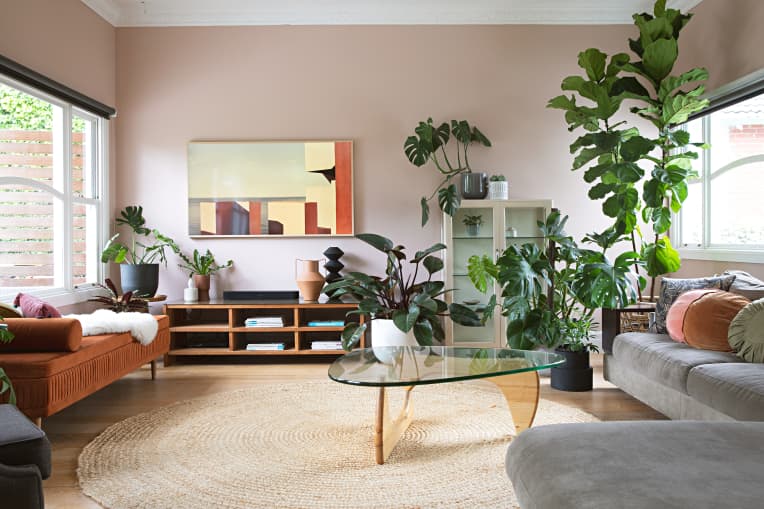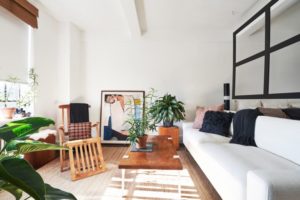
You’re not alone if spending over a year mostly at home has made you want to make some serious changes to your space. But that’s a good thing. This time at home has also forced us to take inventory of what’s working and what’s not, and now’s the time to decide what types of permanent changes can make your home a happier, healthier space for the long run.
So which design and decor trends and learnings from the past year deserve a permanent place in your space going forward? Amy Richards (MFA ‘19), an alumna, and Paul Lee (expected to receive his BFA in May ’21), a current student at The New York School of Interior Design (NYSID) shared some pro tips on self-care design strategies that will serve us well even after we’re not spending quite so much time at home.
1. Great Interior Design Is Worth Its Investment
Even under normal circumstances, we spend a lot of time indoors. As Paul smartly points out, “studies by the Environmental Protection Agency (EPA) have concluded that the average person spends about 90% of their life indoors.” And those studies were done before stay-at-home orders were even a thing.
Going forward, keep that stat in mind when planning your home budget. It’s OK to splurge on home upgrades or design help from a pro when you can, or you may even want to hone your own design skills with a course or two so you can DIY. And who knows? Maybe you’ll discover a new career you love.
2. Versatility Is Key
One of Amy’s key design takeaways from her projects over the past year is that our spaces had to be “reconfigured” to make room for work, school, and daycare—all under one roof. But this type of versatility is also something we’re sure to covet going forward. Now that we’ve (for better or worse) realized the full versatile potential of our spaces, it makes sense to consider how a home can multitask in many ways.
When planning any design project, Amy recommends thinking outside the box when deciding on how best to use a space. This could mean anything from transforming a dining room into a space that could double as a comfy co-working office to carving out a spot for at-home workouts in your living room. Choosing the right furniture, layout, and lighting is key, but the point is — the more versatile your space, the better it will work for your lifestyle.

3. Natural Light Is As Good As Gold
One of the healthiest assets a house or apartment can have is good natural lighting. “The exposure to light is a mood enhancer,” Amy says. “It can make your space more inviting, larger, and it sheds more rays on your plant babies.” And we all know happy plants make us happy, too.
“The proper window treatments would also have to be considered to benefit the occupants,” adds Paul. “Selecting the proper window treatments to control how much light is let into a space can potentially save electrical costs, create ambiance, and ultimately, create a healthy environment.”
4. Daylight Also Affects Layouts
In addition to the physical space in a room, natural light should be a key component when configuring your furniture layouts. “Personally, I would try to capitalize on how to effectively utilize natural lighting,” Paul suggests. “This would dictate the furniture layout.”
This means using areas where you get the most natural lighting as spaces where you spend most of your daytime, such as your WFH space. And when considering a move, always try to see a space, or at least pictures of it, at multiple times throughout the day so you can better judge what could work where.
5. Cleanse, Purge, Repeat
Donating or selling unused clothes, furniture, or clutter should feel cathartic, and it’s something we’ve come to realize has a huge impact on the health of our homes. “Milling around your home can be mundane and repetitive,” Amy says, “and the choice to purge and cleanse is the start of claiming peace.”
While editing your home on a regular basis is important, Amy also reminded us that “nothing is more appealing than a hidden object after it’s been dusted. I always enjoy shopping around my house to rearrange items that have been in one spot for too long.”
6. Work-Life Balance Is More Important Than Ever
Many have realized the importance of having a dedicated workspace that’s either separate from the rest of their home or can be folded up and stashed away once the workday is over. “It may feel comfortable and easy to work from home in your bed on a laptop. However, it can be distracting and cause a blurred line between the time you need away from work (for sanity’s sake),” says Amy. Working from bed or any other impromptu spot can have a negative impact on your well-being and cause issues ranging from neck pain to lack of sleep. An ergonomic, dedicated workspace is a sound investment for anyone who works from home.

